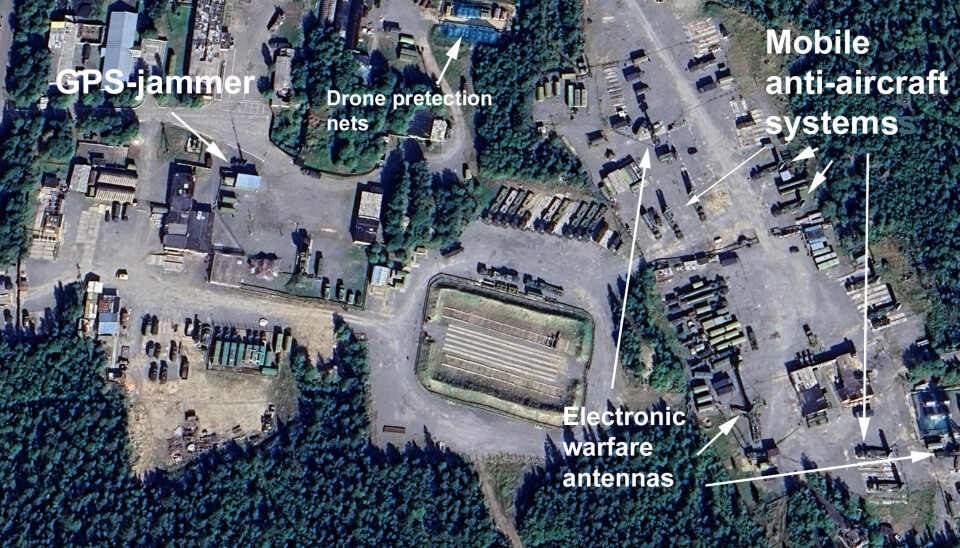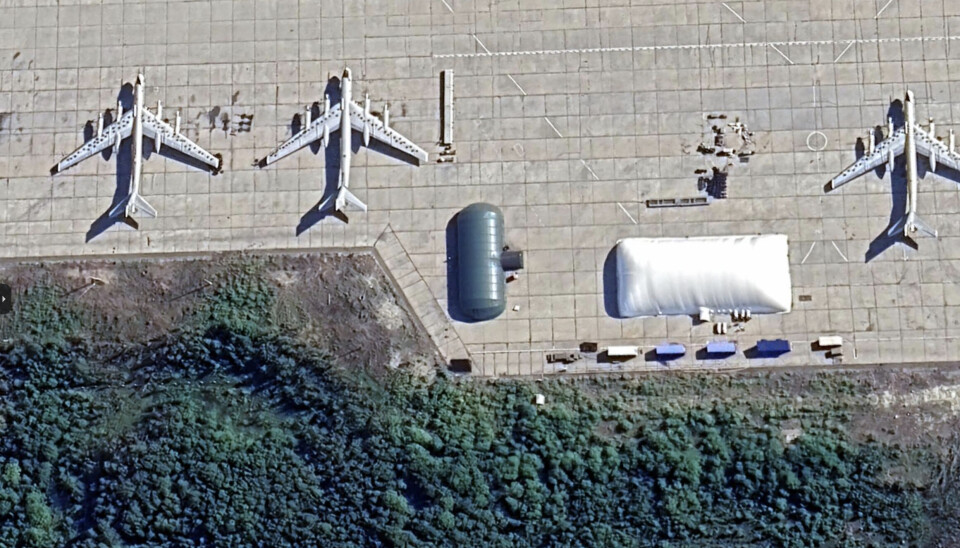
Olenya airbase covers up amid drone fears
Newly released satellite images show how Russia is putting tyres on the long-range Tu-95MS aircraft to confuse image-matching navigation systems used by incoming drones.
In the course of the last two years hundred of sorties have been flown from Olenya airbase on the Kola Peninsula with cruise missiles targeting Ukraine. Drones are now hitting back, with at least three reported attacks in recent months.
Recent satellite images made publicly by Google Earth details how Russia is trying to protect this strategically important airbase inside the Arctic Circle.
As soon as an aircraft parks up after returning from its mission, tyres are put on the tops of the wings. There are between 12 to over 20 tyres on each wing of the Tu-95MS bombers, while the Tu-22M supersonic bombers seen on the satellite images have tyres placed on both the foldable wings and the fuselage.
A pile of tyres designated for this purpose can be seen in front of the two tube-formed plastic halls erected on the airfield apron after Russia moved many of its long-range strategic bombers further north in summer 2022.
This is the first times such tyres have been seen on aircraft in northern Russia. The use of tyres first appeared at Engels-2 airbase last August after it was attacked by Ukrainian drones on multiple occasions. Engels-2 in the Saratov region is much closer to the Ukrainian border and the attacks here were likely to have been the main reason for moving around ten Tu-160 and Tu-95MS bombers north to the Olenya airbase which is some 1,800 km from the border with Ukraine.
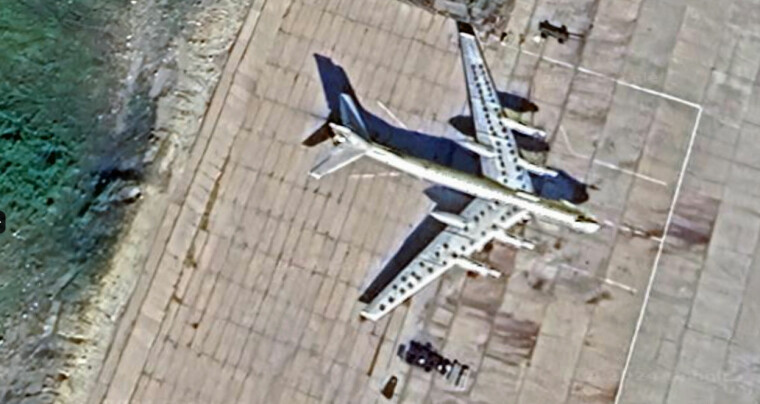
Some 25 tyres are placed on each wing of this Tu-95MS bomber at Olenya air base.
Located some 1,800 kilometers from the border with Ukraine, the airbase has been attacked by drones at least three times in recent months.
With tyres on the wings, the drones’ ‘computer vision’ will have difficulty identifying that this is an aircraft.
The online news site, The War Zone, has previously published images showing how military planes in southern Russia were covered by tires on the wings and the fuselage.
The publication quoted Chief Technology Officer Schuyler Moor of the U.S. Central Command explaining the aim of the tires.
“If you put tyres onto the wings, all of a sudden, a lot of computer vision models have difficulty identifying that that’s a plane,” Moore said at a meeting discussing AI models and data sets.
CNN recently followed a group of drone operators to different launch sites inside Ukraine from where they can attack military targets deep inside Russian territory.
Long-range strikes can fly 1,500 to 2,000 km from launch, one operator told CNN.
Programmed with more than 1,000 different waypoints, a drone can evade Russia’s comprehensive air defense systems, the report says.
“It looks like we play with them,” the operator told CNN. “… but it’s not a game. It’s a war."

In August 2023, also the Soltsy-2 air base in Novgorod region was attacked by drones. Within hours, several of the Tu-22 M3 bombers took off and flew north to Olenya.
The August 2024 satellite images show 39 Tu-22M3 planes, eight more than are normally stationed at Olenya. The majority of the older ones, however, are not airworthy and are mainly used to provide spare parts for the newer bombers.
At the time the satellite image was taken, there were 11 Tu-95MS long-range bombers at Olenya airbase with almost every parking spot occupied. Three stationary planes not due for take off were even positioned at the taxi approaches to the 3,500 meters runway.
Another change visible from satellites at the air base is the fuel deposit area (images below). Here, protective shields which resemble nets made of metal wires have been placed over each of the 13 rows containing multiple fuel tanks.
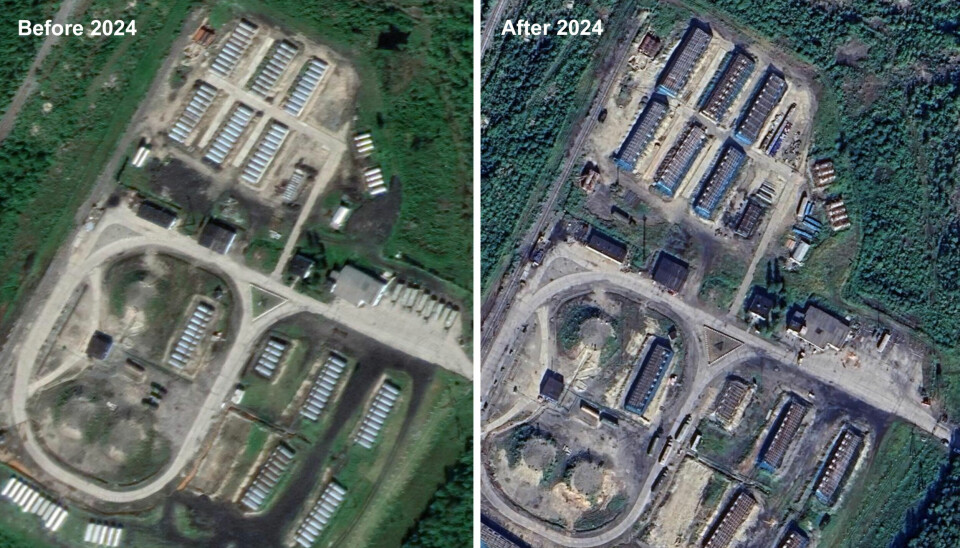
The large 68,000 square meter large fuel tank area is less than a kilometre to the west of the airfield where the planes are parked up.
Ukrainian drones have successfully hit oil depots at many locations further south in Russia causing large fires and obstructing fuel deliveries to the Russian war machine.
Ukraine's selfdefense argument is simple; no fuel - no flights to deliver cruise missiles that can attack their country.
As Ukraine continues to strike military bases deep inside Russia, Moscow is desperately developing counter-measures.
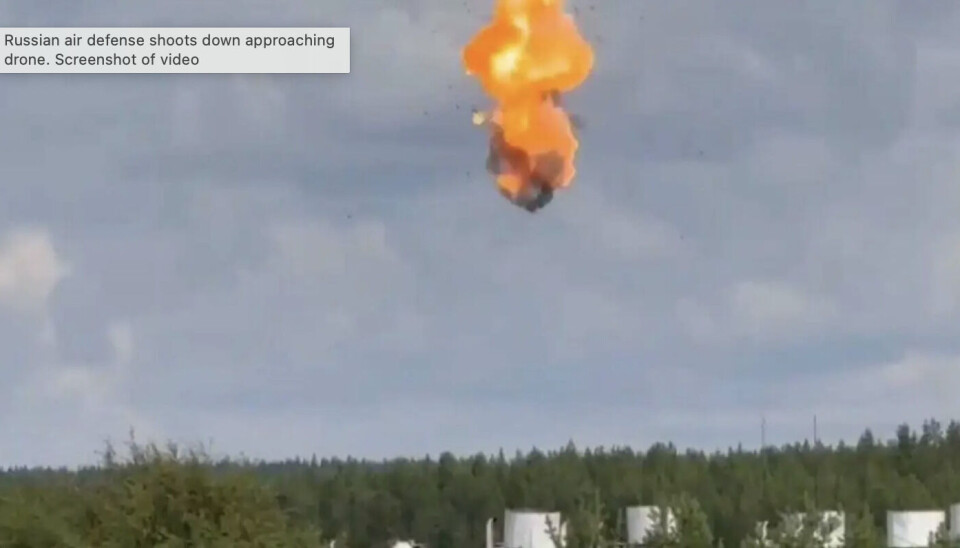
A social media video of a drone approaching Olenya in August this year indicates the main problem for Russian air defense. As the micro-plane loaded with explosives comes in low, traditional S-300 or S-400 missiles are useless as they are designed to take down planes flying higher than just above the tree line.
The drone was finally hit by artillery and exploded in mid-air.
This weekend, Ukraine again sent a wave of drones into Russia. Military officials in Moscow claimed it had “destroyed” 110 Ukrainian drones at various locations inside Russia.
No drones were reported north towards the Murmansk region.
A huge air defence complex, designed to protect Olenya and Russia’s even more strategic ballistic missile submarine base north of Murmansk is located a stone’s throw from the Olenya runway, 1,500 meters to the east.
Google Earth’s latest satellite images now clearly show a base that is on alert.
Six of the S-300, S-400 or BUK-M3 surface-to-air missile launchers have their tubes erected ready for use. This is unlike previous satellite photos from the base, when the same mobile anti-aircraft missile systems were parked with their missile launchers lowered.
Visible on the images are also three tall mobile antennas for powerful electronic warfare. A smaller vehicle-based antenna appears to be a GPS jammer.
